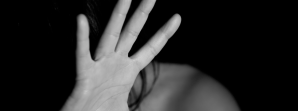Humans subscribe to patterns of behavior that are influenced by their thoughts, and their thoughts are influenced by their patterns of behavior. For instance, we might wash our hands (an action) because we want to cleanse them of germs (a desire). Or we might start thinking of ourselves negatively (a self-perception) if we routinely blow off work to shop online (a behavior). This is all normal and healthy. And it’s flexible, too: If we no longer desire to be clean, we can simply stop washing our hands. Or if we don’t like how we feel about ourselves after our shopping sprees, we can rededicate ourselves to work.
But in about 2.3% of the adult population in the United States, the urge to repeat actions and fixate on certain thoughts in a painful cycle can be chronic, disabling, and uncontrollable. Those are the defining symptoms of obsessive compulsive disorder (OCD). A person suffering from pathological obsessions and compulsions is likely to feel both distress and anxiety, often experiencing severe impairment in performing the activities of daily life.
But the more psychiatrists and neuroscientists learn about OCD, the more effectively they can treat this biological disease. And today people suffering from OCD have access to more knowledge and treatment options than ever before. We’ve condensed the best resources into a comprehensive guide to what fuels OCD—and what approaches lead to the best outcomes for you or your loved one.

What Is the Definition of Obsessive Compulsive Disorder?
Obsessive compulsive disorder (OCD) is a mental health condition characterized by a cycle of uncontrollable, chronic thoughts (obsessions) and repetitive behaviors (compulsions) that severely interfere with daily functioning. Neuroscientists believe that these symptoms are caused by hyperactivity in specific subcortical and cortical regions of the brain.
Psychiatrists used to say that OCD behaviors were caused by the unwanted thoughts/fixations, but today that causal relationship isn’t quite as clear. For example, one scientific team used mathematical modeling to show how someone’s compulsive behaviors may in fact be a core part of the disorder, not simply a consequence of their obsessions. From this perspective, OCD is the result of a broken neurological link between someone’s beliefs/confidence and their actions.
Other researchers believe that an OCD brain “responds too much to errors, and too little to stop signals.“ Simply put, people with OCD know that they need to stop their behaviors, but their brains get stuck in a faulty feedback loop that prevents disengagement.
What Are Obsessive Compulsive Disorder Symptoms?
Obsessive compulsive disorder is characterized by the presence of two groups of symptoms: obsessions and compulsions.
Obsessions can be thoughts, images, or urges/impulses that someone becomes fixated on, causing them considerable distress or anxiety. The mental content might be intense and disturbing. Some examples of obsessions include the following:
- Fear of contamination/germs
- Taboo or forbidden thoughts (often involving sex and religion)
- Violent or aggressive thoughts
- Preoccupation with symmetry
Compulsions are repetitive behaviors that are meant to relieve the OCD sufferer of the extreme anxiety evoked by their thoughts or urges. For example:
- Excessive hygiene to calm one’s fear of contamination
- Compulsive counting to soothe an obsession with symmetry
- Repeatedly checking that a door is locked to allay a fear of home invasion
Though the compulsive behaviors might afford short-term relief from anxiety, they don’t actually make the person with OCD happy. The person can’t control their obsessions and compulsions, devoting at least an hour a day and considerable mental energy to the symptom cycle. They may avoid certain places, objects, or people that could trigger their OCD symptoms. They may also obsessively seek reassurance from friends, family, and educational or news resources on the Internet.
What Are the Different Types of OCD?
There is officially only one obsessive compulsive disorder, but the disorder can be differentiated with the following symptom subtypes:
- Contamination OCD, which might involve an obsession with cleanliness
- Organization OCD, or “just right” OCD, which might involve an obsession with symmetry, counting, or orderliness
- Checking OCD, which might involve threat overestimation and the need to check things to prevent harm
- Hoarding OCD, which might involve clinging to items that others would consider trash
- Intrusive thoughts OCD, which might involve violent, sexual, or “unacceptable” obsessions
- Tic-related OCD, or tourettic OCD, which might involve motor tics
- Ruminations OCD, which might cause someone to fixate on philosophical, religious, or metaphysical questions
- Purely obsessional OCD, which involves obsession without outward compulsions
- Relationship OCD, which focuses on “relationship rightness”
- Sensorimotor OCD, which involves body-focused obsessions
The above OCD categories are somewhat fluid and unofficial. Psychiatrists may also use these additional, less common subtypes to narrow down OCD symptoms:
- Existential and philosophical OCD
- False memory OCD
- Magical thinking OCD
- Pedophilia OCD
- Perinatal OCD
- Postnatal OCD
- Real events OCD
- Scrupulosity (religious) OCD
- Sexual orientation OCD
- Suicidal OCD
It’s important to note, however, that the precise content of someone’s OCD obsessions is almost irrelevant to the mental illness. OCD is about the process of intrusive thoughts and behavior, not the nature of the worries. Someone with OCD who is tormented with violent imagery is probably not going to carry out violent actions. In fact, they might go overboard trying to avoid committing these actions.
In addition to OCD proper, the Diagnostic and Statistical Manual of Mental Disorders (DSM-5) also includes these additional disorders under the umbrella term obsessive-compulsive and related disorders (OCRD):
- Body dysmorphic disorder (BDD) and the subtype muscle dysmorphia
- Trichotillomania (hair-pulling disorder)
- Excoriation (skin-picking disorder)
- Hoarding disorder
- OCD and related disorders induced by a substance/medication or due to another medical condition, e.g. Tourrette’s syndrome
Someone with obsessive personality traits might casually describe themselves as OCD, but people should remember that OCD is a biological disease that can only be accurately diagnosed by a mental health professional. In contrast, there is a personality disorder called obsessive compulsive personality disorder, which is characterized by perfectionism that is wanted (egosyntonic) as opposed to unwanted (egodystonic), as in the case of OCD.
What Are Some OCD Behaviors?
OCD can manifest in a wide variety of behaviors, but the common denominator is that the sufferer can’t control their actions and they cause considerable distress and functional impairment. For example, someone with OCD might do the following:
- Wash themselves until their skin is painful and raw
- Get caught in interminable checking behaviors to the point where they can’t leave the house
- Spend hours a day getting dressed because strict routines must be followed
- Silently repeat words or phrases, making it difficult to communicate with others
- Avoid certain situations that might contain germs
- Need to perform tasks in specific patterns, such as needing to enter through a doorway five times, every time
- Hoard pieces of trash because they’re unable to discard personal items
If you’re concerned that your behaviors might reflect OCD, you can ask yourself if you’re troubled by how long it takes you to finish certain activities, your need to check things, or your concerns about order. If you feel that you must complete these tasks, you may benefit from speaking to a mental health professional.
What Are the Diagnostic Criteria for OCD?
The Diagnostic and Statistical Manual of Mental Disorders (DSM) used to categorize OCD as a type of anxiety disorder, but now OCD has its own category. In order to be diagnosed with OCD, someone must meet the following criteria:
- They experience chronic, intrusive, and unwanted thoughts, urges, or mental images that cause significant anxiety or distress.
- They compulsively try to evade or neutralize these unwanted obsessive thoughts via mental acts or behaviors.
- They must perform these responsive actions according to rigid rules.
- Their responsive actions are neither realistic nor effective ways of preventing distress.
- Their obsessions and compulsions consume at least one hour a day and impede daily functioning. (Level of function is a critical part of an accurate diagnosis.)
- Their obsessions and compulsions cannot be better explained by another mental health condition or substance-related disorder.
Mental health professionals can further refine someone’s OCD diagnosis by specifying whether the person has good, fair, poor, or absent insight into their obsessive-compulsive beliefs. That is, whether the person thinks their beliefs are true or not. They can also specify whether the condition is related to tics.
How Many People Have OCD?
According to estimates from the National Institute of Mental Health (NIMH), about 1.2% of Americans 18 years or older, or about 1 in 100 adults, have OCD in a single year. That’s about 2 to 3 million U.S. adults. The lifetime prevalence is about 2.3% of adults. In addition, NIMH data shows that OCD prevalence is higher for women (1.8%) than men (0.5%) every year.
Children can also be diagnosed with OCD, starting at preschool age. About half a million kids and teens—1 in 200—have the condition. Though OCD can show up at any time, most people first experience symptoms between ages 10 and 12, or between late teens and early adulthood.
What Is the Root Cause of OCD?
Obsessive compulsive disorder is caused by cognitive-affective dysfunction in the brain. But that just begs the question, what causes these structural, chemical, and functional changes?
- Genetics seem to play a role in OCD. Twin studies even show that genes might be more important in OCD that first starts in childhood than in OCD that begins in adulthood.
- Environmental factors also may increase risk. For example, both the experience of trauma and birth complications have been implicated in the development of OCD.
- Beliefs don’t cause OCD, but the condition can reinforce them. For example, a person may have an inflated sense of responsibility, an intolerance for uncertainty, or an overestimation of threat. Maladaptive interpretations of obsessive thoughts can serve to strengthen those thoughts.
- Pediatric autoimmune neuropsychiatric disorders associated with streptococcal infections (PANDAS) has been blamed for causing OCD symptoms and tic disorders in children.
Who Is at Risk of Developing OCD?
If OCD runs in your family, you have a larger risk of having the disorder yourself due to genetic influence. There’s no clear consensus about environmental risk factors that increase the likelihood of OCD.
It’s important to note, however, that 90% of people with OCD are diagnosed with another simultaneous mental health disorder (comorbidity) in their lifetime. The most common comorbidities are mood disorders, anxiety disorders, substance abuse disorders, and impulse-control disorders. Other comorbidities include eating disorders, autism spectrum disorder (ASD), schizophrenia, and attention deficit hyperactivity disorder (ADHD).
How Do I Overcome Obsessive Thoughts?
People with OCD who turn to professional therapy are largely successful in combating both their intrusive obsessive thoughts and the behaviors they feel driven to perform. In fact, cognitive behavioral therapy (CBT) can deliver a 60 to 80% reduction in OCD symptoms.
A specific kind of CBT that’s known as the gold standard of OCD therapy is called exposure and response prevention, or ERP. ERP slowly teaches people how to be exposed to their triggers without resorting to their usual ritualistic responses. Eventually, the person with OCD can learn to disconnect their obsession from their compulsion and tolerate their discomfort.
How Can I Help Someone Else with OCD?
If someone you love has OCD, you might feel helpless at times. But remember that you can’t just stop the person’s symptoms at will. Compulsions are called compulsions because the person must do them. And they suffer greatly because of it.
According to the International OCD Foundation (IOCDF), you can help friends or family members who have OCD by doing the following:
- Learn about the disorder to build your knowledge and compassion
- Help steer your loved one toward effective treatment
- Learn how to recognize and reduce family accommodation behaviors such as assisting in rituals
- Avoid actively opposing rituals, potentially adding to the person’s distress
- Learn how to handle a loved one’s recovery avoidance and explore the reasons they might fear treatment
- Be patient, supportive, and non-judgmental
- Remember that the person is more than their diagnosis
Obsessive Compulsive Disorder Treatment
First-line treatments include obsessive compulsive disorder medication, psychotherapy, or a combination of both. More specifically, mental health professionals might recommend the following obsessive compulsive disorder treatments:
- Exposure and response prevention (ERP)
- Antidepressants (clomipramine, fluoxetine, fluvoxamine, paroxetine, sertraline)
- Cognitive behavioral therapy (CBT)
- Family therapy
- Metacognitive therapy
- Habit reversal training
- Decoupling
- Support groups/group therapy
- Transcranial magnetic stimulation (TMS)
- Deep brain stimulation (DBS)
Unfortunately, it can take some people a long time to find effective treatment due to a lack of accessibility to the mental health care they deserve. One study discovered an average 17-year lag between onset of OCD symptoms and proper treatment. Finding the right therapy is crucial to overcoming these symptoms and the distress they cause.
How Does OCD Affect Relationships?
OCD is a serious mental health condition that can lead to occupational, functional, and social impairments. For some people with OCD, negative effects on relationships may be the most painful. They may experience shame or fear that prevents them from forming intimate relationships. Someone with relationship OCD may constantly need reassurance from their partner that everything is okay. Chronic doubts can take a toll on relationships, no matter how strong they are in reality.
Obsessions and compulsions can affect everyone, not just the person experiencing them directly. Family members might feel pressured to accommodate a loved one with OCD by participating in the behavior, helping the sufferer avoid their triggers, or otherwise accommodating their OCD. This is a well-intentioned effort to relieve the distress of their loved one with OCD. But in reality, one of the best things you can do to help someone with OCD is to resist becoming so involved in their behaviors. Instead, help guide them toward professional treatment with love, patience, and compassion.











